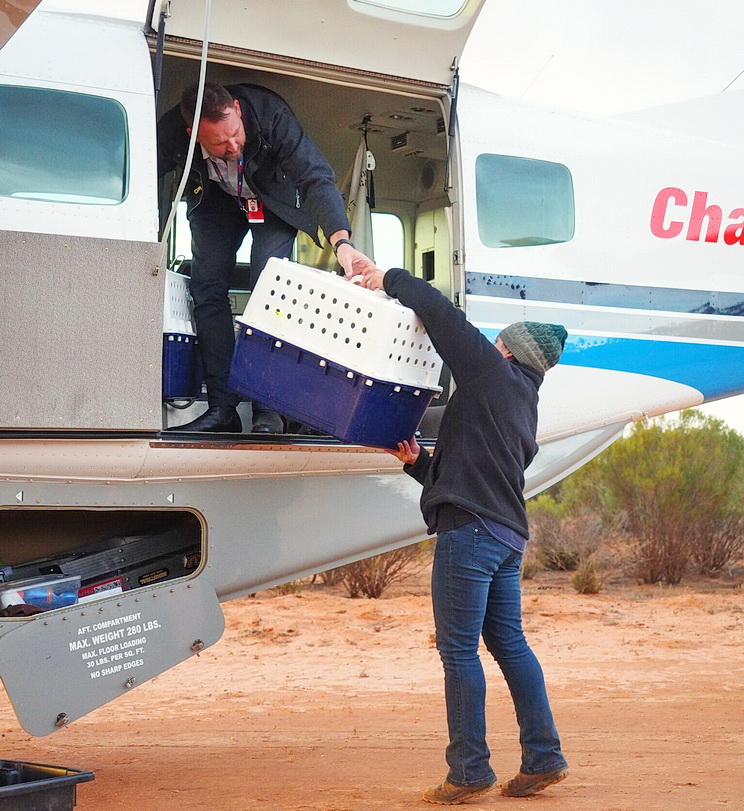Australian Wildlife Conservancy ecologists completed a successful translocation of a further 30 Mala to Newhaven Wildlife Sanctuary last month (June 2018).
The Mala were released in the feral-free area named ‘Mala-Kurlangu’ which means ’home of the Mala’ in the local Warlpiri language. The translocation involved transporting the Mala from AWC’s Scotia Wildlife Sanctuary, in western New South Wales, to Newhaven, supplementing the 27 released there from Watarrka National Park in November 2017.
The 143-hectare fenced Mala Kurlangu sits within the larger Stage 1 feral predator-free area at Newhaven. Prescribed burns, carried out last year in preparation for the Mala reintroduction, mean there is a mix of fresh fodder, as well as plenty of old-growth spinifex where they build their shallow burrows.
The nocturnal marsupials can breed three times a year if the conditions are right. Under optimum conditions, young Mala can progress from the pouch to independence in four months.
Newhaven ecologists are providing supplementary food and water to the translocated Mala, and are monitoring their movements continually with an array of camera traps to check their progress.
Once widespread throughout central and western Australia, the last wild population of Mala on the mainland disappeared in 1991. Individuals from this last wild colony in the Tanami Desert were taken into captivity, and used to establish a number of populations within fenced areas on the mainland, including at Scotia.
A recent analysis of mainland Mala populations revealed important genetic diversity among animals derived from the Tanami Desert animals, particularly among the 70-strong population at Scotia. This latest translocation will help establish a healthy level of genetic diversity among the founder population at Newhaven.
Ultimately, Mala will be released into the 9,390-hectare Stage 1 feral predator-free area, which is projected to support up to 2,400 individuals. This represents a 60% increase in the total population of the species.
 © AWC
© AWC